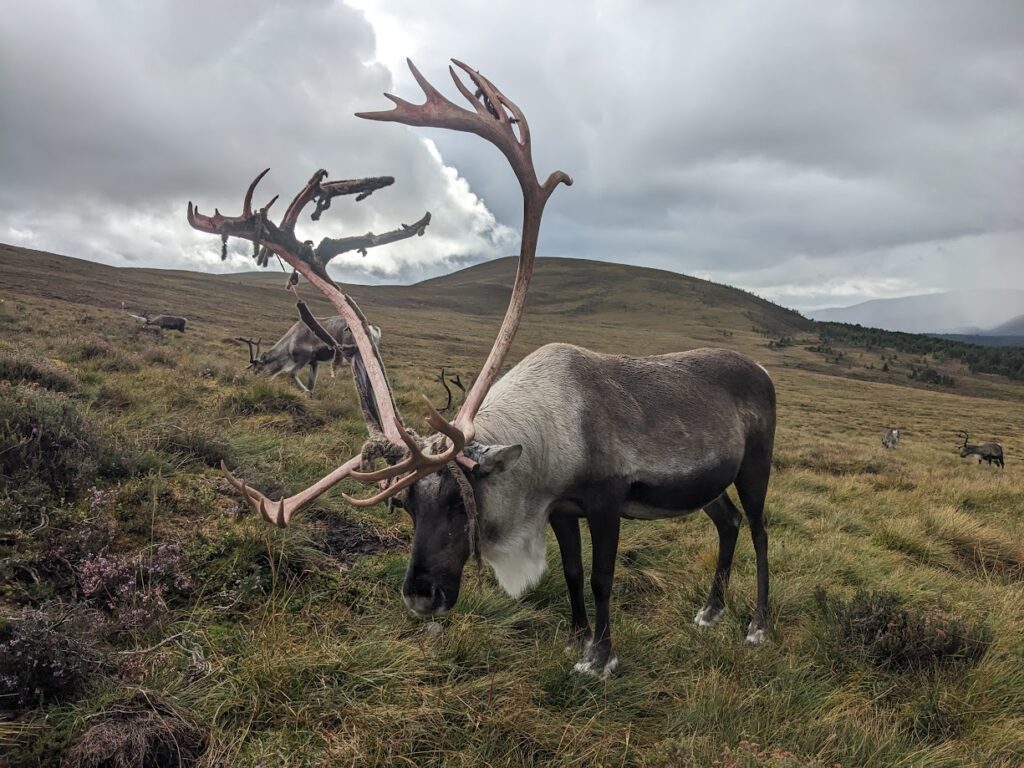
Despite spending the last 40+ years devoting my life to the Cairngorm Reindeer I am still fascinated by the annual cycle of reindeer growing their new velvet antlers, then stripping the velvet to reveal hard bony antlers and finally casting their antlers and growing a new set next year.
It is an amazing process, hugely demanding on their resources, but very beneficial to the individual whether they are males competing for females in the rut or females and young males competing for food in the winter.
The older mature males grow the most impressive antlers and for them the process of growing their new velvet antlers begins before the end of the winter and continues until they strip the velvet from the antlers around the middle of August, in preparation for the rutting season. The bigger the antlers the more likely they are to ‘win’ a fight and so claim a harem of females, so big antlers are important.



One of our main breeding bulls Sherlock showed all the signs of growing a pretty big set of antlers last year and by the autumn he didn’t disappoint us. Luckily for us he is a real gentleman among reindeer and although he sported these great weapons on his head, he was never aggressive towards us and we could still safely go in beside him and his breeding females on a daily basis to feed and check them all.


But their glory doesn’t last long and having spent 5 ½ months growing their antlers the breeding males are the first to cast their antlers at the end of the rut and before the winter sets in. So only about 10-12 weeks of glory with big hard antlers to fight with!
Spartan, who is a couple of years older than Sherlock was first to cast his antlers in the middle of November so I knew it wouldn’t be long before Sherlock was antlerless too. Two weeks later and off came one of Sherlock’s antlers making him very lopsided! Then a couple more days and the other one had fallen.
So now we are in 2024 and Sherlock, who was so dominant in the autumn, has been at the bottom of the pecking order over the winter.




Tilly
